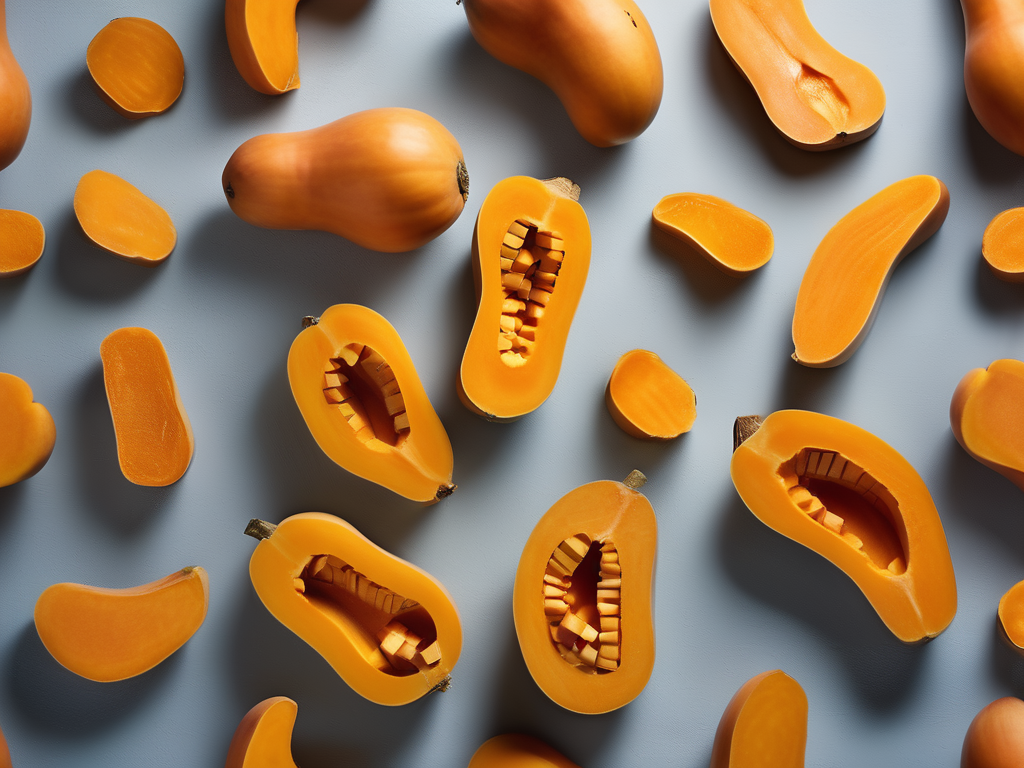
Is Your Butternut Still Good to Eat?
Get Your Free Food Safety Cheat Sheet
30 most common foods with instant answers. Print it and stick it on your fridge—completely free!
Is Your Butternut Still Good to Eat?
Butternut squash is a versatile and nutritious vegetable that can be used in a variety of dishes, from soups to salads to casseroles. However, like any other food, butternut squash can go bad if not stored properly. In this post, we will explore how to tell if your butternut squash is still good to eat and provide you with some practical tips on how to store it correctly. (Butternut)
Signs of Spoiled Butternut Squash
Visual Inspection
- Mold: If you notice any mold on the surface of the butternut squash, it is a clear sign that it has spoiled.
- Wrinkled Skin: A wrinkled or shriveled skin indicates that the butternut squash is past its prime and may not be safe to eat.
- Soft Spots: Press the skin gently. If there are soft spots or indentations, the squash may be spoiled.
Smell
- Off Odor: If the butternut squash emits a foul or sour smell, it is a sign that it has started to spoil.
Texture
- Slimy Texture: If the flesh feels slimy or mushy to the touch, the butternut squash is no longer fresh.
Proper Storage Tips
Before Cutting
- Room Temperature: Store whole butternut squash in a cool, dry place away from direct sunlight.
- Avoid Moisture: Keep the squash in a well-ventilated area to prevent moisture buildup.
After Cutting
- Refrigeration: Once cut, store the butternut squash in an airtight container in the refrigerator.
- Use Within a Week: Cut butternut squash should be consumed within a week for the best taste and quality.
Freezing
- Peel and Dice: Peel, dice, and blanch the butternut squash before freezing to maintain its texture.
- Freeze in Portions: Freeze in portion-sized bags for easy use in recipes.
Safety Precautions
Washing
- Clean Thoroughly: Wash the butternut squash under running water before cutting to remove any dirt or bacteria on the skin.
Cooking
- Cooking Thoroughly: Ensure that the butternut squash is cooked thoroughly to kill any harmful bacteria that may be present.
Allergies
- Cross-Contamination: Be mindful of cross-contamination if you have allergies to other vegetables or fruits.
Conclusion
In conclusion, butternut squash is a nutritious and delicious vegetable that can be enjoyed in a variety of dishes. By following the tips outlined in this post, you can ensure that your butternut squash stays fresh and safe to eat. Remember to inspect the squash for any signs of spoilage, store it properly, and take necessary safety precautions when handling and cooking. Enjoy your butternut squash knowing that you are consuming a healthy and safe food option. (Butternut)
Authoritative Food Safety References
These agencies and university labs inform every tip and health precaution we publish.
USDA FoodKeeper – Cold Storage Guidelines
Official refrigerator, freezer, and pantry timelines maintained by the U.S. Department of Agriculture.
Visit USDA FoodKeeperFDA Produce Safety Rule & Grower Guidance
Field-to-fridge handling practices that prevent contamination of fruits, vegetables, and leafy greens.
Visit FDA Produce SafetyCDC Foodborne Illness Prevention Hub
Surveillance-backed guidance on pathogens, symptoms, and steps to reduce foodborne illness risk.
Visit CDC Food SafetyUC Davis Postharvest Technology Center
University research detailing optimal storage atmospheres for produce after harvest.
Visit UC Davis PostharvestPenn State Extension – Home Food Preservation & Safety
Peer-reviewed extension bulletins on safe canning, chilling, and reheating practices.
Visit Penn State ExtensionGet Your Free Food Safety Cheat Sheet
30 most common foods with instant answers. Print it and stick it on your fridge—completely free! Want more? Upgrade to the complete guide with 70+ foods.
Scan your food directly and get instant safety info using our AI-powered camera feature.